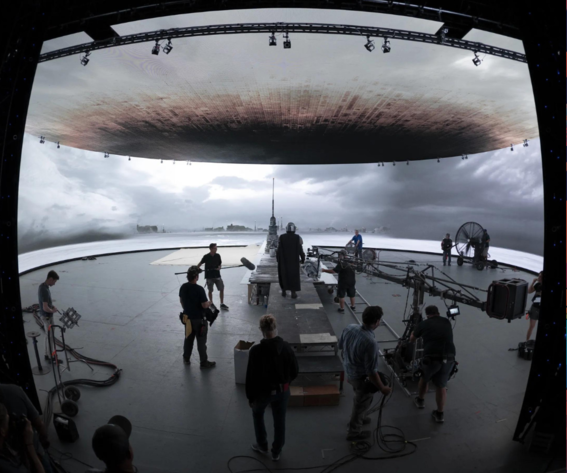The film industry is constantly evolving, and digital technology has become a driving force in shaping the future of filmmaking. From the way films are shot to the tools used for post-production, technology is revolutionizing the art and craft of creating movies. The rise of digital platforms, advanced CGI, and innovative editing software is pushing the boundaries of what filmmakers can achieve, offering new possibilities for storytelling and visual experiences.
The Shift from Traditional to Digital Filmmaking
In the past, filmmaking relied heavily on analog techniques, with physical film stock being the standard medium for capturing and projecting movies. This method had its limitations, such as high production costs, limited editing options, and a lengthy post-production process. However, with the advent of digital cameras and editing tools, filmmakers can now shoot, edit, and produce films more efficiently and affordably.
CGI and Special Effects: Bringing Imagination to Life
One of the most significant ways digital technology is changing the future of filmmaking is through the use of computer-generated imagery (CGI) and special effects. CGI has become a fundamental tool in modern filmmaking, allowing filmmakers to create worlds, characters, and action sequences that were once impossible to achieve.
With the help of powerful software and hardware, filmmakers can now render realistic environments, creatures, and objects that blend seamlessly with live-action footage. This advancement in CGI technology has led to the creation of iconic films and franchises that rely heavily on visual effects, such as the Marvel Cinematic Universe, Star Wars, and Avatar. These films push the boundaries of what is visually possible, providing audiences with immersive and awe-inspiring cinematic experiences.
Streaming Platforms: A New Era of Distribution
The rise of streaming platforms has dramatically changed the way films are distributed and consumed. Platforms like Netflix, Amazon Prime, and Disney+ have disrupted the traditional theatrical release model, offering filmmakers a new avenue for reaching audiences. These platforms have also created a demand for diverse and original content, leading to a surge in production opportunities for filmmakers around the world.
Streaming platforms have also given independent filmmakers a greater chance to showcase their work. In the past, many independent films struggled to find distribution, but today, digital platforms provide a global audience for filmmakers of all backgrounds. This shift has democratized the film industry, allowing for a more diverse range of stories and voices to be heard.
The impact of digital technology on filmmaking extends beyond the traditional realm of movies. Even industries like the gaming world have seen significant crossover with filmmaking techniques, such as the use of CGI and motion capture. Online slot games, for instance, often incorporate cinematic elements to create engaging storylines and immersive experiences for players.
Virtual Production: The New Frontier
Virtual production is another technological innovation that is transforming filmmaking. This technique involves using virtual sets and environments in real time, allowing actors and directors to interact with digital backdrops during filming. One of the most famous examples of virtual production is its use in the Disney+ series The Mandalorian, where digital environments were projected onto LED screens around the actors, eliminating the need for location shoots.
Virtual production offers several advantages over traditional filmmaking methods. It allows filmmakers to create detailed and realistic settings without having to travel to different locations or build expensive physical sets. Additionally, virtual production enables directors to visualize the final product while shooting, making it easier to plan and adjust scenes on the spot.
Editing and Post-Production: Revolutionizing the Craft
Digital technology has also revolutionized the editing and post-production process in filmmaking. In the past, editing was a time-consuming and labor-intensive task that required physically cutting and splicing film. Today, digital editing software like Adobe Premiere Pro and Final Cut Pro allows filmmakers to edit footage quickly and efficiently, making it easier to experiment with different cuts, transitions, and effects. Additionally, tools offering AI picture generator for free have made it easier for filmmakers and creators to generate high-quality visuals, concept art, and storyboards, further enhancing the creative process.
These tools provide editors with greater creative control, enabling them to manipulate footage in once unimaginable ways. From color grading to sound design, digital technology allows filmmakers to perfect every aspect of their film with precision. Moreover, advancements in artificial intelligence (AI) and machine learning are beginning to play a role in editing, with AI-assisted tools helping filmmakers streamline tasks such as sorting through hours of footage or identifying the best takes.
Conclusion
As digital technology continues to advance, the future of filmmaking is full of possibilities. Virtual reality (VR) and augmented reality (AR) are emerging as new tools for filmmakers, offering audiences interactive and immersive experiences that go beyond traditional film viewing. These technologies allow viewers to become active participants in the story, blurring the line between the real and virtual worlds. In conclusion, digital technology is transforming every aspect of filmmaking, from production to distribution.









Leave a reply